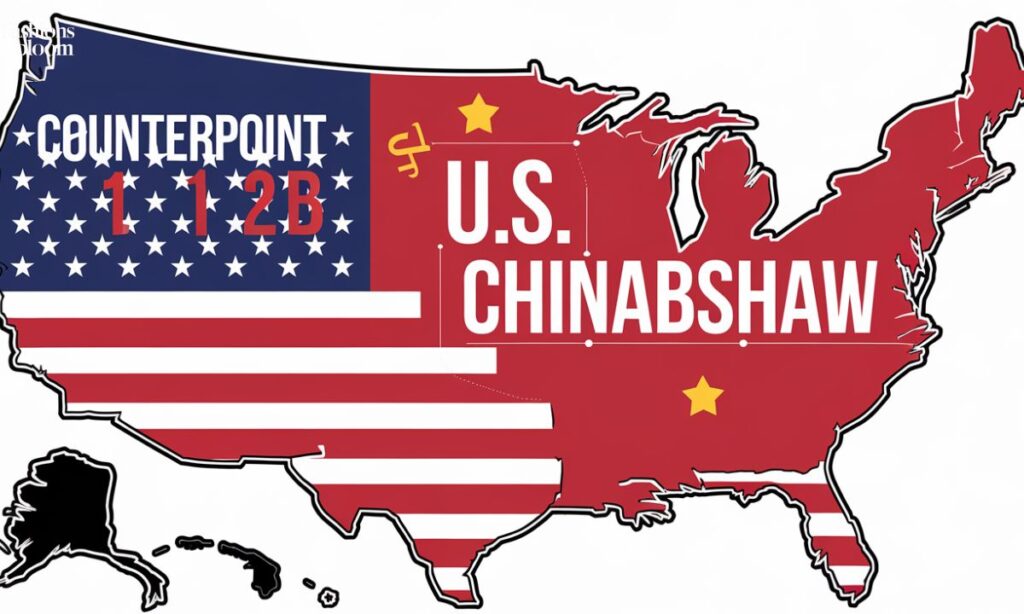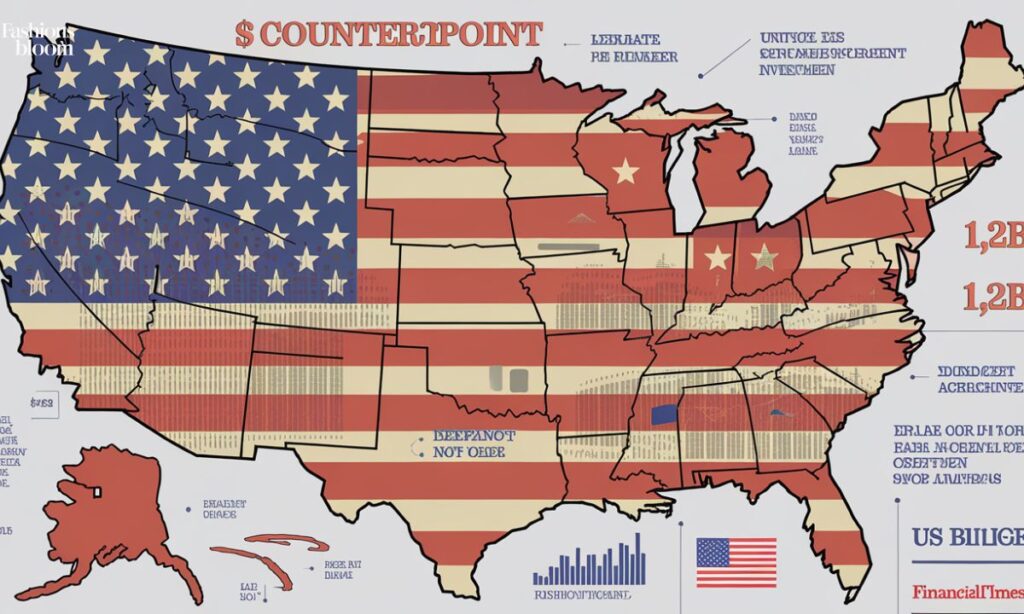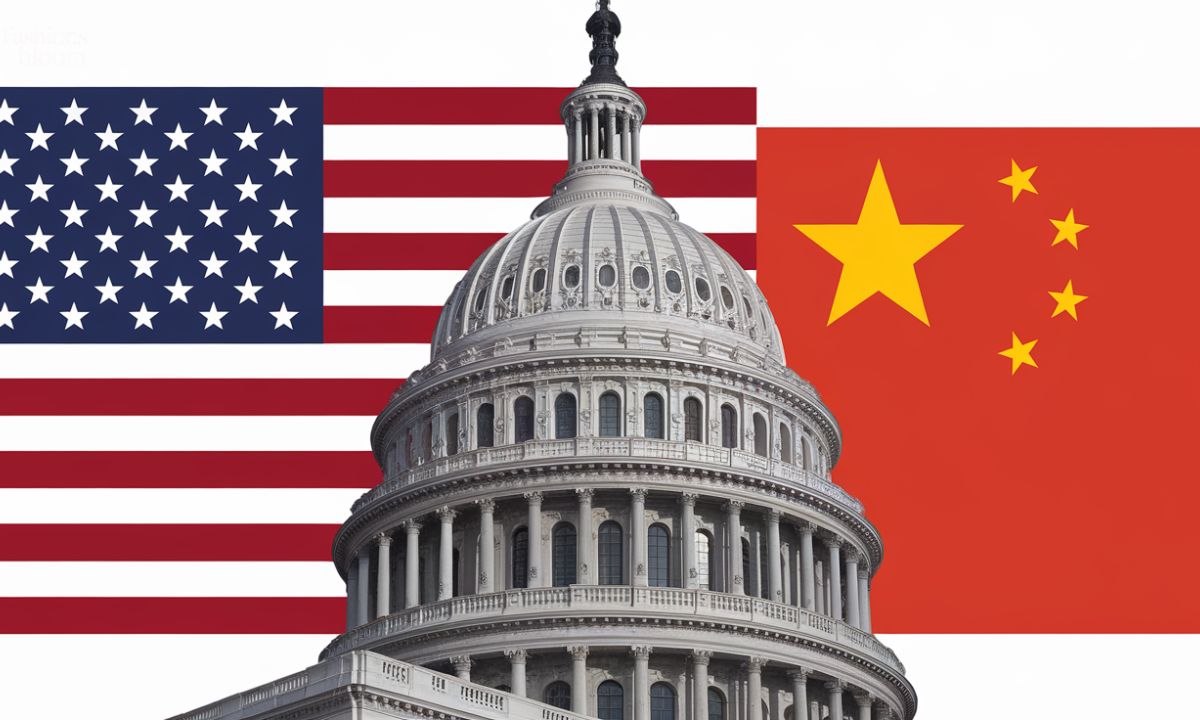ChinaBradshaw FinancialTimes analyzes the intricate financial dynamics between the United States and China, emphasizing the significant $1.2 billion figure that highlights their economic interdependence and impact on global markets.
The report explores trade relations, investment opportunities, and the implications of political collaborations. It underscores the importance of understanding these dynamics for stakeholders navigating an increasingly interconnected global economy.
What is Counterpoint 1.2B US ChinaBradshaw FinancialTimes?
Counterpoint 1.2B US ChinaBradshaw FinancialTimes is an analytical report that explores the intricate financial dynamics between the United States and China. It focuses on the $1.2 billion figure, which symbolizes the deep economic ties between these two superpowers.
The report goes beyond mere numbers. It examines the implications of trade agreements and investment strategies between the two nations. Understanding this report is essential for grasping the broader political economy that influences both countries significantly.
Additionally, the Counterpoint report addresses the political ramifications tied to economic collaborations. By analyzing these relationships, it underscores the significance of bilateral trade agreements and their impact on market stability.
US-China Financial Relationships and the US$1.2 billion Figures

The financial relationship between the US and China is complex and multifaceted. The $1.2 billion figure reflects various economic interactions, including trade deficits and investment flows. This number highlights the ongoing negotiations that define their financial ties.
Investment opportunities in sectors like technology play a significant role in shaping this figure. The semiconductor industry is particularly important, as both countries compete for dominance in this field.
Looking at economic forecasts, ongoing tensions may evolve into significant challenges. The interplay of tariffs and trade agreements will continue to shape US-China relationships.
Background of US-China Financial Relations
The background of US-China financial relations is rich and marked by significant historical events. The relationship deepened after China joined the World Trade Organization in 2001, facilitating increased trade and investment. This entry enhanced economic interdependence between the two nations.
However, tensions have emerged over the years. Issues such as trade deficits and currency manipulation have sparked disputes. These challenges have led to calls for more balanced trade agreements and affected public perceptions in both countries.
Understanding this background is essential for grasping the current economic landscape. The evolution of these financial ties plays a crucial role in shaping global economic policies.
Read This Blog: A Closer Look At William Walker Curry Ross and His Family Background
Influence on Global Markets
The influence of Counterpoint 1.2B US ChinaBradshaw FinancialTimes extends beyond the immediate relationship between the US and China. As these two countries navigate their financial interactions, global economic growth is significantly impacted.
Investors must remain vigilant regarding potential economic sanctions and their implications. The political implications of these financial ties can disrupt not only local markets but also international dynamics.
Moreover, the report underscores the need for financial stability amid ongoing negotiations. Economic cooperation between the US and China can either enhance or hinder progress in the global landscape.
Political Ramifications of Counterpoint 1.2B US ChinaBradshaw FinancialTimes
The political ramifications of Counterpoint 1.2B US ChinaBradshaw FinancialTimes are profound and far-reaching. Economic relationships between the US and China influence diplomatic ties, shaping foreign policy decisions.
Trade negotiations often affect public opinion and political discourse in both countries. The perception of economic rivalry can escalate into broader geopolitical conflicts.Additionally, the implications of economic agreements extend to other nations.
As the US and China interact, their policies can influence global economic trends. Understanding these political ramifications is crucial for predicting future developments in international relations.
Potential Risks and Challenges

US-China financial relations face several potential risks and challenges. Trade disputes and tariffs can lead to significant market volatility, affecting both countries and global markets. Economic interdependence means that disruptions in trade can have far-reaching consequences.
The competition for technological dominance poses another critical challenge. As both nations vie for leadership in sectors like semiconductors, misunderstandings can arise, leading to retaliatory measures.
Moreover, domestic political factors can impact the financial relationship. Shifts in leadership or public sentiment can alter priorities and strategies, affecting cooperation. Navigating these risks requires careful diplomacy and a commitment to mutual understanding.
Future Projections
Future projections for US-China financial relations indicate a complex and evolving landscape. Ongoing trade negotiations may enhance economic collaboration, but underlying tensions could persist.
The race for innovation in sectors like artificial intelligence will drive investment strategies, significantly influencing global markets. The outcomes of these technological advancements will impact economic growth in both countries.
Geopolitical dynamics will also shape future relations. Emerging global alliances may influence US-China interactions, requiring both nations to balance competition with cooperation. Understanding these projections is essential for stakeholders looking to navigate the evolving financial landscape.
Public Opinion and Media Response
Public opinion on US-China financial relations is often polarized and influenced by media narratives. In the United States, concerns about job losses and trade imbalances foster negative perceptions of China.
Conversely, Chinese media often highlight the benefits of economic cooperation. The narrative in China focuses on mutual respect and growth opportunities, contrasting with the more critical views prevalent in Western outlets.
Media plays a crucial role in shaping perceptions. Balanced reporting that emphasizes the complexities of the relationship can foster a better understanding. Public sentiment can influence policymakers, making it essential for the media to present nuanced perspectives.
Read This Blog: Exploring The Life and Legacy of Johanna Thiebaud In Contemporary Art
Significance of the Transaction
The transaction between the US and China represents a critical point in their financial relationship, highlighting the importance of economic interdependence for both nations’ growth and stability.
This deal underscores the potential for collaboration in key sectors, such as technology and trade, fostering innovation and market expansion. It can lead to mutual benefits and economic resilience.
Furthermore, the transaction’s implications extend globally, influencing international markets and investment strategies. Understanding its significance is essential for stakeholders navigating the complexities of global economic dynamics.
Lessons Learned

The evolving landscape of US-China financial relations offers several key lessons. First, the importance of open communication and diplomatic engagement cannot be overstated. Regular dialogue can mitigate misunderstandings and foster cooperation, even amidst tensions.
Second, the necessity of diversification in supply chains has become evident. Reducing reliance on each other for essential goods enhances economic stability and minimizes vulnerabilities in times of disruption.
Lastly, lessons from past trade negotiations highlight the need for flexibility. As global economic conditions change, both countries must be willing to reassess their strategies.
Frequently Asked Questions
What does Counterpoint 1.2B US ChinaBradshaw FinancialTimes refer to?
Counterpoint 1.2B US ChinaBradshaw FinancialTimes is a report analyzing the financial relationships between the US and China, focusing on a $1.2 billion valuation.
How does Counterpoint 1.2B affect markets around the world?
The report influences global market reactions by highlighting the interdependence of US-China trade and its implications on economic stability.
Is the 1.2B dollar valuation of Counterpoint US China Bradshaw FinancialTimes associated with technology investments?
Yes, the valuation is closely linked to technology investments, particularly in sectors like the semiconductor industry.
Can Counterpoint 1.2B in the long term enhance relations between the USA and China?
It has the potential to enhance relations if both nations prioritize economic cooperation and navigate their differences effectively.
Why is the Counterpoint 1.2B significant for most people?
It is significant as it sheds light on the economic dynamics that affect market stability, investment opportunities, and the potential for global economic growth.
Conclusion
The Counterpoint 1.2B US ChinaBradshaw FinancialTimes report is pivotal for understanding the economic landscape between the United States and China. The $1.2 billion figure encapsulates the complexities of their financial relationships and the broader implications for global markets.
By analyzing these dynamics, stakeholders can better navigate the evolving political and economic environment.The insights derived from this analysis highlight the necessity for continued economic cooperation and effective trade negotiations.

I’m Brook, a passionate blogger with 8 years of experience. I love writing about tech, fashion, business, and health. My goal is to share useful information and insights with you. Explore my website to discover exciting content on various topics!








